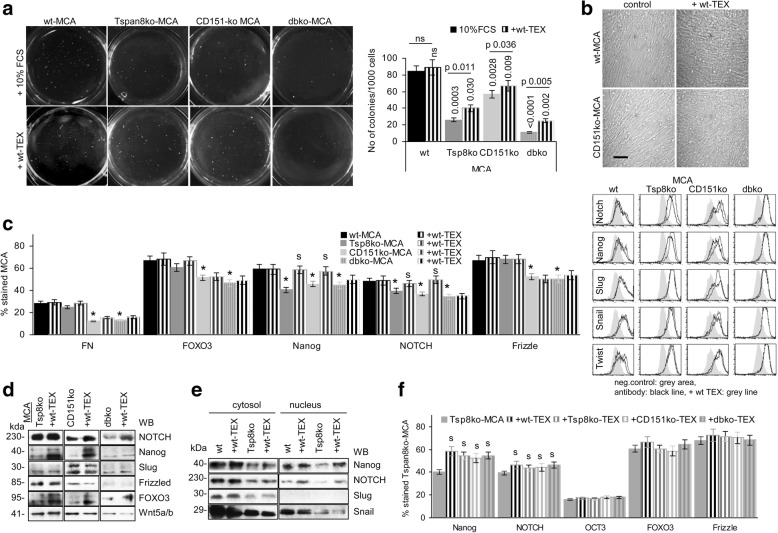Fig. 2.
Anchorage-independent growth, proliferative activity and EMT of wt- and ko-MCA tumor cells. a Examples of wt- and ko-MCA cell soft agar colonies in the absence or presence of wt-TEX (30 μg/ml) and mean colony number/1000 cells±SD (3 assays); significant differences between wt and kd cells and between controls and wt-TEX-treated cells are indicated; b wt- and CD151ko-MCA cells were seeded at low density in 6-well plates in the absence or presence of wt-TEX. Cell density and morphological appearance were evaluated after 72 h by light microscopy (scale bar: 100 μm); (c-f) wt- and ko-MCA tumor cells were cocultured with wt- and ko-TEX for 48 h. c Flow-cytometry analysis of EMT marker expression and representative examples; d WB of EMT transcription factor expression; e WB of EMT transcription factor expression in the cytosol and the nucleus; f Flow cytometry analysis of EMT transcription factor expression in Tspan8ko-MCA cells after coculture with wt- or ko-TEX; (c,f) mean % stained cells±SD (3 assays); significant differences between wt- and ko-MCA: *, by coculture with TEX: s. Anchorage-independent growth of ko-MCA cells is impaired and partly restored by wt-TEX. Wt-TEX promote a slight shift towards a more fibroid morphology. But, only reduced Nanog and NOTCH expression become upregulated by wt- and ko-TEX without changes in nuclear recruitment. This argues against Nanog and NOTCH upregulation being Tspan8- and CD151-TEX dependent

